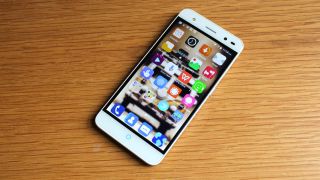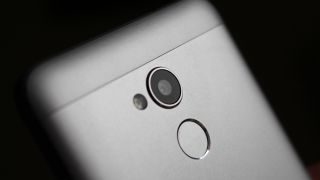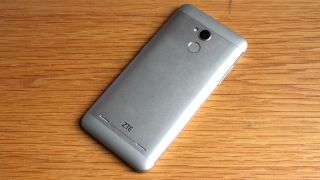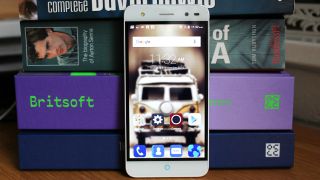TechRadar Verdict
The ZTE Blade V7 Lite's premium looks belie its budget origins. Interesting UI tweaks and the ability to expand the phone's storage can't fully atone for the dull 720p screen, poor camera and weak chipset, but this is still decent value for money.
Pros
- +
Nice design
- +
Expandable storage
- +
Fingerprint scanner
Cons
- -
Dull 720p display
- -
Dodgy camera
- -
Sluggish performance
Why you can trust TechRadar
The cheaper companion to the flagship ZTE Blade V7, the V7 Lite sports a different design and weaker internals, but also comes with a much lower price point – £149.99.
For that modest outlay you get a quad-core processor, 2GB of RAM, 16GB of storage (expandable via microSD card), a fingerprint scanner and a 2,500mAh battery, all wrapped up in a premium metal shell.
But competition is steep, especially in the crowded entry-level market, with phones like the Moto G4 providing a lot of handset for not a lot of money, so does the ZTE Blade V7 Lite’s beauty run more than skin deep?

Key features
- A premium metal body
- A fingerprint scanner
- Middling performance and no NFC
While we're seeing an increase in the number of metal-bodied smartphones these days, the Blade V7 Lite is almost unique in that it offers premium build quality in a budget sector flooded with all-plastic handsets.

Dimensions: 143.8 x 70.2 x 7.9mm
OS: Android 6.0
Screen size: 5-inch
Resolution: 720 x 1280
CPU: 1GHz quad-core
RAM: 2GB
Storage:
Battery: 2,500mAh
Rear camera: 13MP
Front camera: 8MP
The phone's construction is arguably one of its biggest selling points, and those attractive curves – dreamt up by ZTE's Munich-based design centre – allow it to outrank its low-cost rivals when it comes to pure desirability.
On the front, there's a 5.0-inch, 720p screen, which is covered in fetching 2.5D glass. On the rear, you'll find a fingerprint scanner – still a rarity on phones in this price bracket – as well as twin speakers. A 13MP camera complete with LED flash rounds off the package.
Powered by a quad-core MediaTek chipset and boasting just 2GB of RAM, the Blade V7 Lite can hardly be considered a powerhouse by modern standards, and overall performance is merely acceptable rather than impressive.
On the plus side, ZTE has made some interesting amendments to the core Android 6.0 software, including some rather unique gesture and motion-based shortcuts, which allow you to open apps or functions quickly.
The Blade V7 Lite is powered by a 2,500mAh battery, which offers decent stamina, but takes over two and a half hours to fully replenish. Those of you hoping to join in with the USB Type-C revolution will also be disappointed, as the phone has a micro USB port instead.
There's also no NFC support, so you won't be able to make contactless payments via Android Pay.

Design and display
- A surprisingly high-end metal and plastic build
- 5-inch 720p screen not as bright as we’d like
Despite the low price point, the Blade V7 Lite mixes metal and plastic in its construction, giving it a premium feel that is lacking from many other budget Android phones, such as the Bush Spira E3X.
Most of the V7 Lite is metal, but at the top and bottom you'll find plastic sections which allow the mobile antenna to function properly.
While the use of two different materials is obvious when you know what to look for, to the casual observer they blend reasonably well. The mixture of components has also allowed ZTE to make the handset quite light – it tips the scales at just 134g.

On the back of the Blade V7 Lite you'll find a fingerprint scanner, which is indented into the casing – it's not a clickable button, however.
While such a feature is unusual on phones in this price bracket, this scanner sometimes needs a second tap to recognise your print. It's not a deal-breaker, but don't expect the same level of performance offered by the scanners on Samsung and Apple handsets.
Also on the rear you'll find the 13MP camera with LED flash, and at the bottom there are two speakers.

On the right-hand side there's the power button and nanoSIM tray – which either accepts two nanoSIM cards or a single nanoSIM and microSD card – and on the left-hand edge there's the volume rocker.
The 3.5mm headphone port is situated on the top, while the micro USB (no reversible USB Type-C here, sadly) is on the bottom.

The 5-inch IPS LCD display sports a 720p resolution and is covered in 2.5D glass, which curves nicely at the corners. The lack of 1080p might be disappointing, but a bigger issue is that the screen isn't particularly bright and is therefore hard to make out in direct sunlight.
Viewing angles are thankfully rock-solid. Above the screen you'll find the earpiece and front-facing 8MP snapper, which is accompanied by an LED flash, making selfies in darkened environments much easier.

